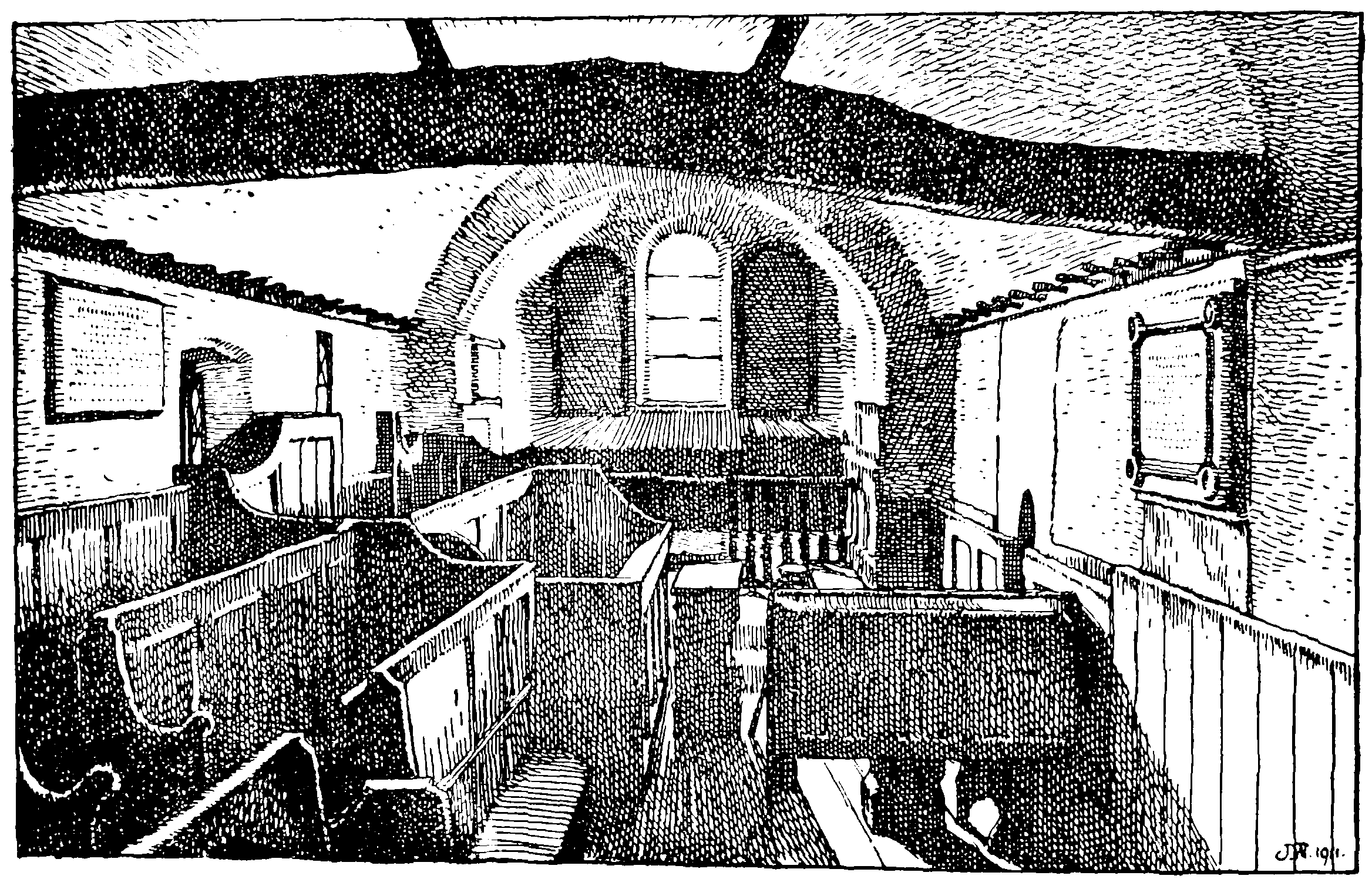A History of the County of Hampshire: Volume 5. Originally published by Victoria County History, London, 1912.
This free content was digitised by double rekeying. All rights reserved.
'Parishes: St Lawrence', in A History of the County of Hampshire: Volume 5, (London, 1912) pp. 193-195. British History Online https://www.british-history.ac.uk/vch/hants/vol5/pp193-195 [accessed 23 April 2024]
In this section
ST. LAWRENCE
St. Lawrence (Suthwade, Sancti Laurentii, xiii cent.; Wathe, xiv to xvii cent.) is now practically a suburb of Ventnor. There is no village proper, the houses being scattered along the high road from Ventnor to Niton. The parish comprises what is known as the Undercliff, and has at its eastern end the Royal National Hospital for Consumption built in 1869 and comprising ten blocks for the accommodation of 150 patients. The soil is a chalky marl, rich in fossils. The parish contains 328 acres, of which the greater part is arable land. (fn. 1) There is a parochial school built in 1898. The principal residence in the parish is St. Lawrence Hall (Sir Thomas Brooke-Hitching).
MANOR
The first mention of the manor occurs towards the end of the 13th century, when as the manor of SOUTHW ADE ST. LAWRENCE it belonged to William Russell, who had acquired it through his marriage with the daughter of Thomas de Aula. (fn. 2) The manor followed the same descent as Yaverland (q.v.) until the death of Thomas Umpton in 1542. (fn. 3) The reversion after his widow's death was devised with Yaverland to Thomas Hyde, (fn. 4) but part appears to have passed to Edward Unton or Umpton son of Alexander, brother and heir of Thomas, as Edward in 1560 divided the manor with Thomas Hyde, the latter taking two-thirds and the former one-third. Richard Coningsby, who was evidently related to Thomas Hyde through his wife Elizabeth, conveyed a third of two parts of the manor to Anne widow of Sir James Worsley in 1562. (fn. 5) In the same year Edward Umpton disposed of his share to German Richards, who sold it to Anne Worsley. Henry Cottesmore, who conveyed the whole manor in 1571 to John Worsley, (fn. 6) was perhaps heir at law of the Cottesmores. From John Worsley the manor followed the same descent as Appuldurcombe in Godshill (fn. 7) (q.v.) until 1855. St. Lawrence was retained by the Earl of Yarborough, and passed to his second son the Hon. Evelyn Cornwallis Anderson-Pelham, D.L., J.P. It now belongs to his son Major Cecil Henry Anderson-Pelham.

St. Lawrence Old Church looking East
A holding called Southwathe or Stoureswathe was held towards the end of the 13th century by John de Woolverton of Woolverton in Shorwell of the Esturs of Gatcombe. (fn. 8) It had passed before 1346 to Robert de Aston, (fn. 9) and evidently followed the same descent as Woolverton to the Dingleys, as it was held in 1431 by Ralph de Dingley. (fn. 10) This holding is probably to be identified with the land called Little Woolverton Under Wathe mentioned by Warner as belonging to Ralph de Woolverton. (fn. 11) Sir John Oglander also mentions a piece of land in the parish of St. Lawrence 'Undor Wathe' belonging to Sir John Dingley where there were ruins of a building supposed by Sir John to have been a chapel. (fn. 12) This estate probably became merged in Little Woolverton in Whitwell, with which it may have been identical.
CHURCH
The old church of ST. LAWRENCE, at one time said to be the smallest in England, is now disused except for burials. It was probably built early in the 13th century as a manorial chapel for the tenants here, but has been so altered from time to time as to be hardly recognizable as an ancient structure. Originally only 30 ft. long, it was lengthened 10 ft. in 1842 (fn. 13) by the addition of a small chancel.
The new church of St. Lawrence was built in 1878 from designs by Sir Gilbert Scott, and consists of a nave, chancel, north aisle, porch and western turret with two bells.
The plate consists of a 17th-century chalice, two chalices and a paten given by Lady Dysart in 1804, a paten given by Henry Worsley, rector, 1825, a modern silver flagon given by the Hon. Mrs. D. Pelham Sinclair, and a pewter flagon.
The registers date from 1678.
ADVOWSON
The advowson of St. Lawrence is mentioned for the first time early in the 14th century, (fn. 14) and was then in the possession of the lord of the manor. Since that time it has followed the same descent as the manor, (fn. 15) Major Cecil Pelham being the present patron.
CHARITIES
There do not appear to be any parochial endowed charities in St. Lawrence. The Royal National Hospital for Consumption and Diseases of the Chest, situate in this parish, is general in its nature, as also 'The Frederick Fund' and 'The Hamilton Fund' for Evangelical Clergymen, &c. (fn. 16)
